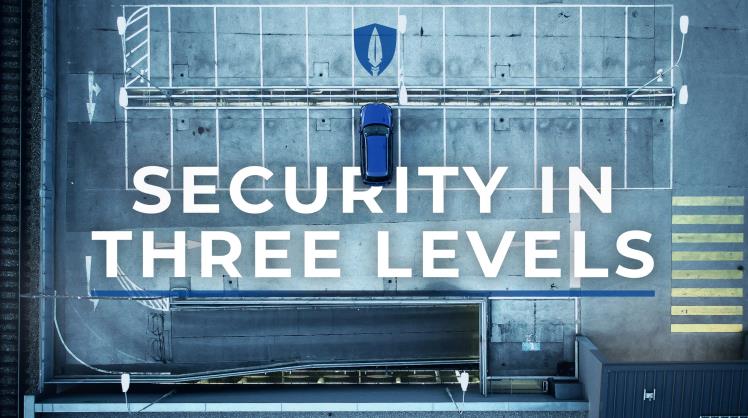The Three Pillars of Security: Protecting Assets, Information, and Individuals

Security is handled at three levels: physical security, network security, and organizational security, each safeguarding assets, data, and people.
This is the straightforward answer if you’re Security looking for a Google-rich snippet. But to truly understand the depth of security, we need to go deeper. Security today is not just about locking doors or using passwords—it’s about creating a multi-layered defense system that protects individuals, organizations, and nations.
As someone with professional expertise in IT security and risk management, I’ll guide you through all three levels of security: what they mean, why they matter, and how to implement them effectively.
Personal Details of Security Levels
| Field | Details |
|---|---|
| Concept | Security is handled at 3 levels |
| Three Levels | Physical Security, Network/Information Security, Organizational Security |
| Objective | Protect assets, data, and individuals |
| Who Needs It | Businesses, Governments, Individuals |
| Examples | CCTV cameras, Firewalls, Security Policies |
| Primary Benefit | Reduced risk of breaches, theft, and cyber-attacks |
| Future Outlook | AI-driven security, Zero Trust Architecture |
The Three Levels of Security Explained
Let’s break down the three levels where security is handled:
Physical Security – Protecting Tangible Assets
Definition:
Physical security protects the physical assets of an organization such as buildings, hardware, employees, and infrastructure.
Examples of Physical Security:
-
CCTV surveillance
-
Biometric access systems
-
Security guards
-
Fire extinguishers and alarms
-
Secure server rooms
Why Important?
Even the strongest cybersecurity measures can fail if someone physically steals your servers, laptops, or documents.
Network & Information Security – Safeguarding Data
Definition:
This layer ensures data confidentiality, integrity, and availability. It protects digital information from unauthorized access, misuse, or breaches.
Examples of Network Security:
-
Firewalls and Intrusion Detection Systems (IDS)
-
Data encryption (SSL, VPNs)
-
Strong passwords and multi-factor authentication (MFA)
-
Regular security patches and updates
Why Important?
Data is the most valuable asset today. Protecting it from hackers, ransomware, and phishing attacks is critical for individuals and organizations.
Organizational Security – Policies & Human Factors
Definition:
Organizational security involves strategies, governance, and awareness training that ensure people and processes follow secure practices.
Examples of Organizational Security:
-
Security policies and compliance frameworks (ISO 27001, GDPR)
-
Employee cybersecurity training
-
Risk management and audits
-
Incident response planning
Why Important?
Studies show that 95% of breaches are caused by human error. Educating employees and enforcing policies reduces vulnerabilities.
Security Levels in Action: Real-World Examples
| Security Level | Example | Impact |
|---|---|---|
| Physical Security | Biometric entry at banks | Prevents unauthorized access |
| Network Security | Firewall in a corporate network | Blocks cyber threats |
| Organizational Security | Employee phishing awareness training | Prevents social engineering attacks |
Why All Three Levels Are Needed
Security is like a chain—it’s only as strong as its weakest link.
-
Without physical security, hackers can steal hardware.
-
Without network security, sensitive data can be leaked online.
-
Without organizational security, employees can unknowingly cause breaches.
👉 Combining all three creates a robust defense system.
Common Security Threats at Each Level
| Security Level | Threats | Countermeasures |
|---|---|---|
| Physical | Theft, natural disasters | Locks, alarms, disaster recovery plans |
| Network | Hacking, malware, DDoS attacks | Firewalls, encryption, monitoring |
| Organizational | Insider threats, human error | Training, policies, audits |
Business Case: Security Levels in Organizations
Imagine a financial institution:
-
Physical Security: Guards at entrances, secured vaults.
-
Network Security: Encrypted transactions, real-time fraud monitoring.
-
Organizational Security: Employees trained on phishing emails.
👉 This layered approach ensures complete safety of money, data, and reputation.
Future of Security in India & Globally
-
AI & Machine Learning for threat detection
-
Zero Trust Security Models
-
Blockchain-based authentication
-
Cybersecurity talent demand increasing by 40% yearly
Security is evolving from being reactive to proactive—organizations no longer wait for an attack, they predict and prevent it.
Expert Tips to Strengthen All Three Security Levels
-
Combine Technology + Human Awareness
-
Firewalls alone are not enough, train your people.
-
-
Regular Security Audits
-
Identify vulnerabilities before attackers exploit them.
-
-
Implement Zero Trust
-
Never trust, always verify every access request.
-
-
Disaster Recovery Plans
-
Be prepared for natural and cyber disasters alike.
-
Frequently Asked Questions (FAQs)
Q1: At what three levels is security handled?
Security is handled at three levels: physical security, network/information security, and organizational security.
Q2: Why is physical security important?
Because even advanced cybersecurity fails if devices or servers are physically stolen.
Q3: What is the role of organizational security?
It creates policies and trains employees to minimize human errors and insider threats.
Q4: Which level of security is most critical?
All three are interdependent—neglecting one exposes the system.
Q5: How can individuals apply these security levels?
Lock devices physically, use strong passwords, and stay aware of phishing scams.
Conclusion
So, at what three levels is security handled?
It is handled at:
-
Physical Security – Protects physical assets.
-
Network/Information Security – Protects data and digital infrastructure.
-
Organizational Security – Protects people and processes through policies.
👉 My expert advice: Don’t treat these levels separately. Instead, use a holistic approach that integrates physical, digital, and organizational safeguards. This is the only way to ensure complete protection of assets, information, and individuals.




